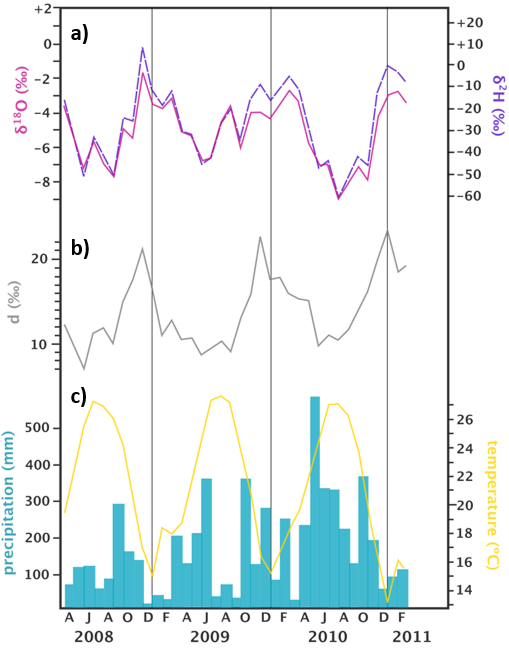7.1 Moisture Source Region
Uemura and others (2012) monitored precipitation weekly on Okinawa Island, to the south of Japan. They found a negative correlation between air temperature and δ2H and δ18O values, which is the converse of the usual positive correlation where temperature and values decrease in concert (Figure 33). The reason for this negative correlation was related to the source regions for precipitation, which had a greater effect on the isotope composition than temperature at the precipitation site. In summer, precipitation has lower values than in winter. When considering atmospheric circulation, they noticed that summer precipitation is sourced from a distant oceanic location, allowing greater rainout and therefore more negative δ values. Winter precipitation is sourced by local evaporation from the warm Kuroshio Current into dry Asian continental air, allowing little rainout prior to precipitation at the site. The higher D-excess values for winter are also typical for evaporation into drier air. The finding that precipitation on Okinawa has different sources in winter and summer may be important when predicting how climate change may affect precipitation and therefore water resources on the island.

Figure 33 – Graphs of a) δ2H and δ18O, b) d-excess and c) precipitation and temperature over a 3-year period on Okinawa Island. The negative correlation between T and values is caused by differences in moisture source region for summer and winter, and the degree of rainout as moisture travels from those different regions to the island (after Uemura et al., 2012).
